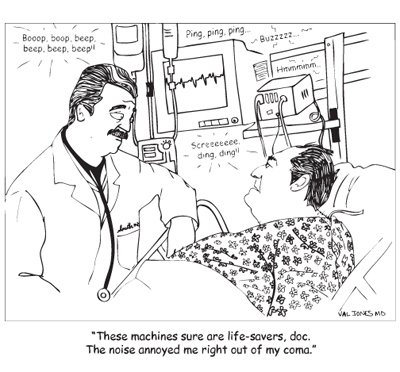June 10th, 2011 by Happy Hospitalist in Health Policy
No Comments »

Hospital costs are out of control. We have an aging population living longer with more complicated presentation of disease. We have an insurance driven platform instead of a health driven accountability. The long term sustainability of that architecture is one of guaranteed insolvency.
One way or another hospitals are going to find their lifeline cut off. Medicaid is bankrupt. Hospital profit margins from Medicare have been negative for almost a decade. In addition, the rapid rise in private insurance premiums and industry’s gradual but accelerating exit from the health insurance benefit market all tell me that hospitals must find a way to reduce the cost of providing care.
There are many ways hospital costs can be reduced. Administrators are paid handsomely to make it happen. Either they do or they don’t succeed. Either they survive the coming Armageddon of hospital funding or they don’t. The hospitals least able to reduce their expenses in a market of decreasing payment will fold and other hospitals will become too big to fail. You want to be too big to fail. That’s the goal. If you can survive the coming tsunami, you will be saved and bailed out when you are the only one left standing. That is what history has taught us.
So, how can hospital costs be reduced? One way is to Read more »
*This blog post was originally published at The Happy Hospitalist*
April 21st, 2011 by Richard Cooper, M.D. in Health Policy, Opinion
No Comments »

In a recent op-ed in the San Francisco Examiner, William Dow, a professor of health economics at UC Berkeley, commented on the importance of education as a means of enabling more people to afford health care insurance. In my view, education is important not simply because an educated population can more easily pay for health care. The main importance is that educating children will allow those children and their children to have healthier childhoods, less burden of disease as adults, access to more personal and communal resources to deal with whatever disease they have and less need for health care, and that translates into less health care spending. Let me frame this in terms of the San Francisco Bay Area.
In a series of articles in the Contra Costa Times last year, Susanne Bohan and Sandy Kleffman described the striking differences in life expectancy in poor vs. wealthy ZIP codes in East Bay. Life-expectancy in Walnut Creek (94597) was 87.4 years, but it was only 71.2 years in Sobrante Park (94603), where household incomes are about half and poverty >20%. That’s a gap of 16.2 years. We find that, in addition to a shorter life-expectancy in Sobrante, the inpatient hospital utilization rate is double the rate in Walnut Creek. Poverty is not only tragic. It’s expensive. Read more »
*This blog post was originally published at PHYSICIANS and HEALTH CARE REFORM Commentaries and Controversies*












